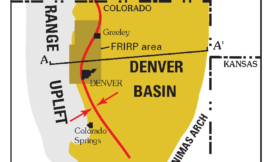High oil and natural gas prices have piqued the interest of many prospective mineral and royalty investors. If you can buy properties for the right price, high prices into the future mean you could enjoy an excellent return on investment. In this episode, Justin and provide a guide to buying mineral rights. We discuss how to find the best mineral rights purchase opportunities, how to identify and contact mineral owners, how to hire the right advisors, and how to avoid common mistakes.
As a reminder, we are sharing this information for educational purposes only and this should not be construed as tax, legal, or investment advice. Get help from your financial advisor to see if investing in mineral rights, royalties, or non-operated working interests make sense for you.
Be sure to also subscribe on Apple Podcasts via the link above and please leave us an honest rating and review. We read every one of them and sincerely appreciate any feedback you have. To ask us a question to be featured on an upcoming episode, please leave a comment below or send an email to feedback@mineralrightspodcast.com.
Recap of Different Ways to Invest in Mineral Rights and Royalties
In addition to purchasing mineral rights and royalties directly from the owner, there are other vehicles that allow you to directly invest in this asset class. From buying shares in publicly traded mineral companies, investing in a mineral fund as a Limited Partner, to buying minerals at an auction website or through a broker, there are many ways to buy mineral rights.
We talk about all of this an more in previous episodes on this topic:
- MRP 26: Investing in Mineral Rights and Royalties
- MRP 126: Deep Dive on Investing in Mineral Rights, Royalties, and Working Interests
Mineral Rights as a Trophy Asset
Mineral rights in a desirable area with significant oil and gas activity can be considered trophy assets like an investment property in a desirable area with a lot of amenities. Here are some of the factors:
- The current macroeconomic environment with high inflation and rising bond yields is throwing a wrench in the asset allocation models of the past.
- Many pundits are saying that the 60/40 portfolio is dead, at least for now (mix of 60% stocks and 40% bonds)
- Bond yields and skyrocketing with inflation and the threat of the Fed raising interest rates. When bond yields go up, the price of the underlying bond goes down. So if you are holding that bond, increasing yield means the value of that bond is falling. Bonds are no longer a safe haven in the current environment.
- Typical advice in times of rising inflation is to hold valuable scarce assets like gold, commodities, real estate in desirable areas, shares of valuable companies that produce stuff, and most recently Bitcoin. This is not investment advice and you should do your own research. I follow a few excellent investment strategists and you can find links to their content below.
- If you have independently decided that you would like to diversify and increase your holdings in income producing property, mineral rights may fit that bill.
- I have several investors that I have worked with in the past or that I’m currently working with that have mentioned this as the reason they became interested in oil and gas properties.
- Not all traditional real estate is created equal. There is a difference between the building in downtown Manhattan where real estate is scarce vs. a building in downtown Amarillo or most other cities across the US because the income from rent for the building in Manhattan is much higher than the building in Amarillo.
- Similarly, not all mineral rights and royalties are created equal. The unleashed, non-producing minerals in Indiana not near any oil and gas activity have a much lower value than mineral rights in the heart of the greater Permian Basin in West Texas leased at a 25% royalty rate with 6 newly drilled long horizontal wells.
Why NOT to Invest in Mineral Rights
It goes without saying that you are probably aware of the potential downsides of investing in mineral rights if you’ve made it this far. That said, some potential investors are scared off for several reasons:
- Income is volatile as it is directly linked to the price of oil & gas
- Environmental and political headwinds
- Commodity prices are near historical highs so valuations are also high right now
- You need available cash and high risk tolerance (willingness to lose money).
Since buying mineral rights is a cash only transaction, most lenders won’t give you a mortgage to finance the purchase of mineral rights. Most lenders that are willing to lend against mineral rights will only lend against royalty income as collateral.
How to find Mineral Rights to Buy
- There is a lot of nuance here so the moral of the story is to get help from experienced advisors, whether it is in the area of valuing property, running title, negotiating an oil and gas lease or reviewing other legal contracts.
- That said, go where the activity is and that is the investment thesis of most mineral investors. To “invest ahead of the drill-bit”.
- Find where operators have permitted wells and/or filed pooling or spacing requests with the state oil and gas commission – good indicator of where they may be planning on drilling.
- Nothing is certain, I’ve seen many areas where operators apply for drilling permits that maybe don’t get approved, where the operator pulls them and changes their mind on where they want to drill, or maybe the permits get approved but the wells don’t get drilled before the permits expire.
- That said, other information can help inform the operator’s plans. Especially for publicly traded oil and gas companies. Listen to investor calls, review investor presentations, sometimes you can glean a lot of information in terms of how many rights they might be planning to run over the next fiscal year, well performance, infrastructure investments or commitments, etc.
Drilling Down
- Some investors like to identify an area that might be somewhat overlooked vs. hot areas like the core parts of the Delaware Basin in West Texas. By finding out-of-favor or overlooked areas, you may be able to find properties to buy at a lower price.
- With mineral rights, you want to buy in an area with quality operators who have the funding to eventually drill a well on your property. Many mineral investors look for good operators with a healthy balance sheet, a good management team, and a good reputation (do what they say they are going to do).
- It is important to come up with your own investment thesis on where you want to invest. From the specific basin or play, the type of product mix (oil, oil + gas, gas only), demographics – rural vs. urban (pros and cons when it comes to running title, size of interests, etc.)
- Finally, one of the most important considerations is how much you have to invest and how much you want to allocate to an individual deal. Many mineral owners diversify across multiple properties, in different geographic locations, to prevent being too heavily weighted in one type of product or in one area.
Guide to Identifying and Contacting Mineral Owners
While many beginner mineral rights investors look to auction websites or brokers for their first purchase, some investors look to buy off-market deals. Doing the legwork yourself often means you can find properties at a lower purchase price since you don’t have to deal with the mark-up of a middleman like a broker. A little known secret is that information related to who owns mineral rights in a given area is often found in public records like state oil and gas commission filings or deeds recorded in the county clerk & recorder’s office. Texas also has the added advantage of tax rolls as a source of identifying royalty owners (owners of producing mineral rights).
Start with state oil and gas commission fillings
- Identify area of interest
- Look for permitted wells or look where operator recently file spacing or pooling requests
- These applications contain a lot of useful information including well spacing assumptions, reservoir engineering calculations, and most importantly, a list of interested parties. These are both mineral interest owners and non-operated working interest owners (owners of oil and gas leases).
- Tip: Typically operator will have run title on these interests to identify the mineral owners that they need to lease before drilling a well. You don’t know how many net acres they own, if they have marketable title, if there are title defects (e.g. in relative’s name that has passed away, needs to go through probate)
- List of names only, need to do additional research to find their contact information (mailing address, phone numbers, email addresses). Called skip tracing – professional tools like LexisNexis
County clerk & recorder’s office
- Online vs. in-person
- Title search
- Make sure they are the owner of record (look for mineral deeds, oil and gas leases (especially)). Or maybe the property is in a relative’s name, need to plan for title curative like probate.
How To Contact Mineral Owners
- “Ground game”
- Mail, phone, email
- Develop a script
- Have a purchase and sale agreement template already prepared in case someone is interested
- Get help with valuing the property to make sure you don’t overpay
Best Practices for Buyers
- Don’t pay before getting the deed (sellers, don’t send deed before getting paid). Conundrum – use attorney or title company as trusted 3rnd party, close in escrow like traditional real estate.
- Run title on any property before you close to make sure the seller actually owns it!
- After closing, contact the operator immediately
- Make sure you follow state requirements for any conveyance documents, every state is different which is why:
- Use a qualified attorney to review any contracts or deeds.
Resources Mentioned in This Episode
- My Company: Silverheels Investments LLC – Mineral rights coaching, valuations and advisory services
- MRP 10: How to Perform a Title Search
- George Gammon YouTube “This channel will help you build and protect wealth . . . in a world of out of control central banks and big governments. “
- Lyn Alden Investment Strategy
Thanks for Listening!
To share your thoughts:
- Leave a comment or question below (we read each one and your question may be featured in a future episode)!
- Ask a question or leave us feedback via email.
To help out the show:
Click the Apple Podcasts Logo Above to leave us a rating & review. It really helps us reach those that need to hear this information and only takes a minute. We greatly appreciate it! Plus, you can get a shout out on a future episode!
Thanks again – until next time!





Awesome article and very informative!
Pingback: MRP 160: Strategies for Investing in Mineral Rights – The Mineral Rights Podcast